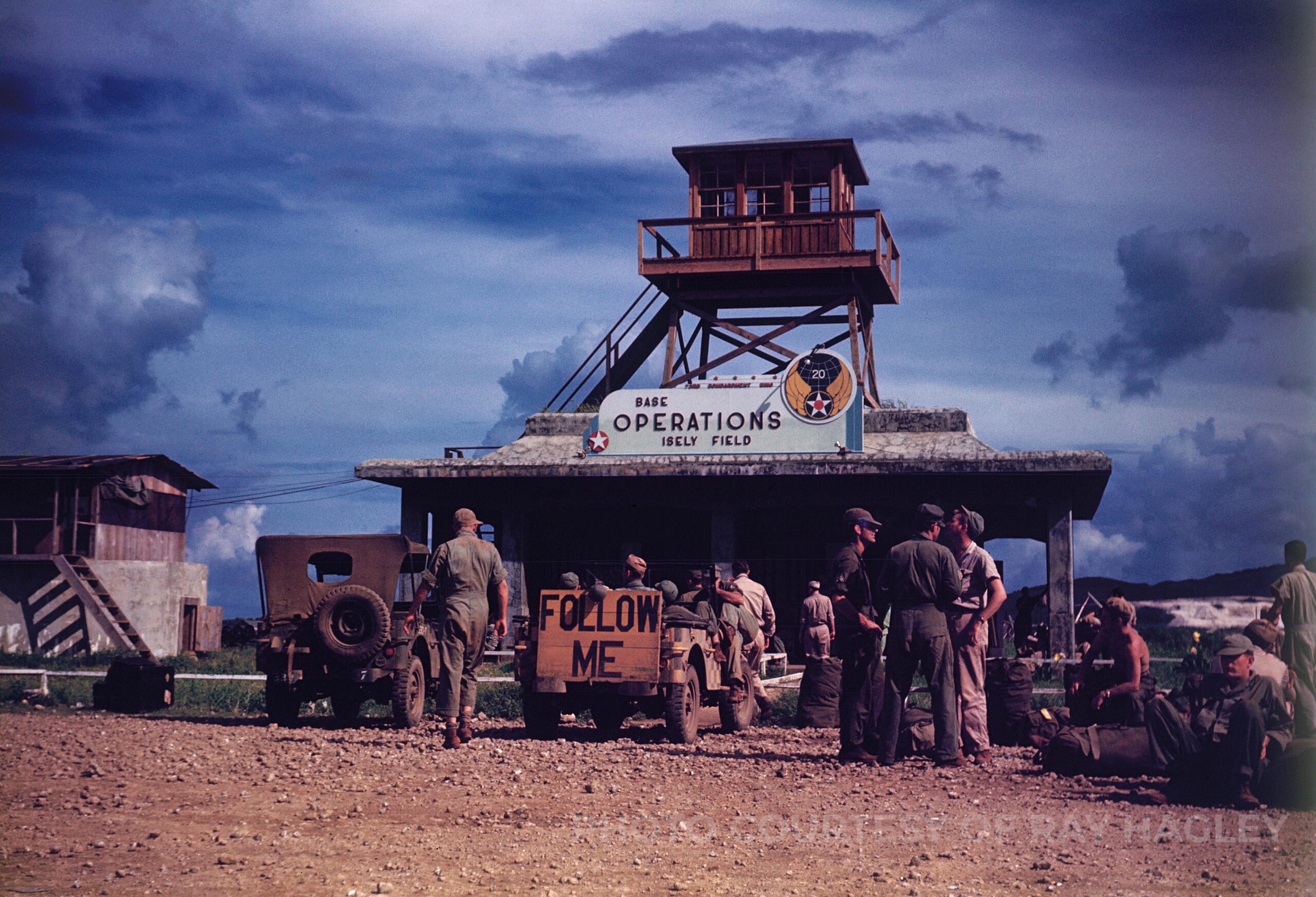STAFF Sergeant Raymond Hagley, originally from Cleveland, Ohio, left his family a legacy of rare color Kodachrome slides.
Little did his son Greg know that he would be getting these rare WWII color photographs—about a dozen of them.
His father Ray arrived on Saipan as part of the advanced deployment of the 73rd Bombardment Wing in the summer of 1944. As a staff sergeant, Hagley served under General Emmitt O’Donnell Jr.
He was an artist by trade and he also dabbled in photography. While stationed at Isely Field, Ray took photographs using Kodachrome film.
Before WWII, Ray was part of the Bob Grayson Band that toured the country. He joined the group at the Ringside Club in Forth Worth, in Texas and the Sky Club in Pittsburgh, Pennsylvania.
He also met and befriended Glenn Miller, one of the most prominent American jazz musicians and band leaders of the Swing Era.

In 1943, he was drafted into the U.S. Air Force and took his basic training at Colorado State College.
He was stationed on Saipan as part of the 20th Army Air Force’s 73rd Bombardment Wing.
While growing up, Greg remembered his father’s stories of the long trip to Saipan. He said his father flew to Saipan on a B-29.
His father told him, “I flew for many hours and never got to see the ocean because there were no windows on the plane.”
Greg said his father also told him that they were confronted by the desolation of Saipan, the sadness that gripped the island with so many killed during the invasion.
His father and his fellow servicemen would often take a dip in the waters off Ladder Beach when it got especially hot.
The Hagley patriarch also would stand guard at night on the lookout for Japanese soldiers who would come down the hills foraging for provisions and other supplies.
According to Greg, his father took some “remarkable” photos while stationed on Saipan.
He said color film was not widely used during the war with the Brownie camera using black and white film as the preferred choice.
He also said that his father used a Kine Exakta 35 mm camera.
“Kodachrome is widely regarded as one of the best films available for the archival and professional market because of its color accuracy and longevity. When shot with a high quality lens, a 35 mm Kodachrome slide will hold detail equivalent to 25 or more megapixels of image data,” said Hagley.
Now 75 years after Ray took the Kodachrome photos, they appear as if they were taken only yesterday – still sharp and vivid.
Aside from photography, to while away his time, Ray also kept busy doing nose art. He thought of it as a “great escape.”
When he died in 1991, he left Greg his stash of history—color photographs and over a hundred black and white photos of Saipan during WWII.
In 2007, the Hagley family went to Saipan for a weeklong visit to share the their patriarch’s photos. The family donated a set of prints to the CNMI government.









